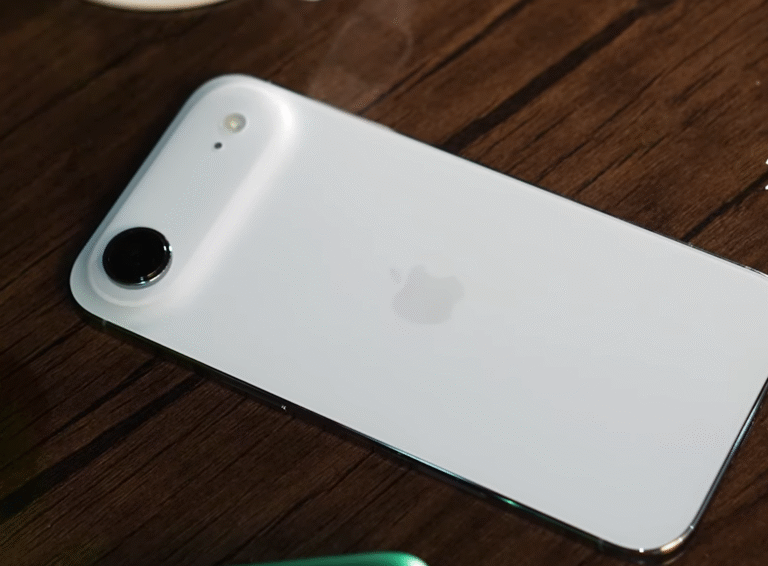In today’s smartphone market, refurbished devices are everywhere. While they can be a cost-effective option, many buyers often struggle to distinguish between a genuine, factory-sealed phone and one that has been refurbished by a local shop. The Google Pixel 7, a popular device in Pakistan and other regions, is one such phone that’s available in both original and refurbished versions. Understanding the differences between the two is crucial to avoid being misled or overcharged.
Why the Pixel 7 is Often Refurbished
The Pixel 7 has become widely available in the market in both PTA-approved and non-PTA variants. As newer phones like the Pixel 8 and Pixel 9 have entered the scene, the Pixel 7 is now more affordable, making it an attractive option. However, this has also created a large supply of refurbished units. While not every refurbished phone is bad, the quality can vary significantly, and some sellers even attempt to pass refurbished phones as brand new.
First Impressions: Original vs. Refurbished
When you hold both phones side by side, one of the first differences you notice is in the frame and body finish. The original Pixel 7 uses premium glass and metal construction with a smooth, precise finish. The refurbished version, on the other hand, often has a frame that feels cheaper, with visible misalignments between the glass back and the metal sides. In some cases, you’ll notice slight gaps or uneven fitting that immediately give away its refurbished nature.
Color tones can also be an indicator. The original model usually has a clean, greyish tint, while refurbished versions sometimes display a bluish hue because of lower-quality materials used in replacement parts.
The Display and Camera Cutouts
The display on both original and refurbished Pixel 7 units often looks similar, as many refurbishers use original panels. However, the front camera punch-hole alignment is where you can spot inconsistencies. On a genuine Pixel 7, the punch-hole and camera are perfectly centered. Refurbished phones may show slight misplacement or even dust inside the camera module, which is a sign the phone has been opened and reassembled.
Dust inside the rear cameras is another red flag. By shining a flashlight on the lenses, you can often see particles trapped inside refurbished units—something you’ll never find on a sealed original device.
Camera Glass: The Biggest Giveaway
One of the most reliable ways to detect a refurbished Pixel 7 is by examining the camera glass. Google uses Gorilla Glass for its original camera lenses, ensuring durability and clarity. Refurbishers, however, often replace it with cheaper plastic or low-quality glass. This becomes evident when you tilt the phone under light: the refurbished lens may fog up or produce odd flares, while the original remains clear and sharp.
Build Quality and Durability
The difference in build quality becomes more obvious with closer inspection. On the original Pixel 7, the metal frame and glass back are seamlessly integrated. In refurbished units, you might feel the back panel flex slightly when pressed, or notice that the frame and back glass don’t align perfectly. Such gaps can reduce the phone’s water resistance and make it more prone to dust entering.
The Risk of Refurbished Units
Refurbished phones are not necessarily useless, but they do come with risks. Many are not water-sealed properly after being opened, which can lead to quicker damage from dust and moisture. Their lifespan is also shorter compared to brand-new units, especially if cheaper components have been used during repair.
Some refurbished Pixel 7 models are well-built and may function fine, but spotting them requires a sharp eye. Even the best refurbished models often fail the camera glass test—the lens quality simply can’t match Google’s original Gorilla Glass.
Why This Matters for Buyers
The real problem isn’t buying a refurbished phone knowingly—it’s when sellers pass them off as original, sealed devices. This is where unsuspecting customers are overcharged for something that isn’t brand new. If a refurbished phone is sold as refurbished, at a fair price, it can still be a good option. But when it’s labeled as “10/10 original” and priced accordingly, that’s outright fraud.
Pixel 7 as a Market Favorite
Despite these risks, the Pixel 7 continues to be a favorite among buyers. The Pixel 6 has become older and harder to find in good condition, making the Pixel 7 a strong alternative. With better availability, competitive pricing, and solid performance, it remains one of the most popular choices in Pakistan’s smartphone market today.
Final Thoughts
If you’re considering buying a Google Pixel 7, be cautious. Always inspect the frame alignment, camera cutouts, and especially the lens glass before making a purchase. Use a flashlight to check for dust inside the cameras and tilt the phone under light to test the lens quality. By doing so, you’ll be able to distinguish between a genuine Pixel 7 and a refurbished one—and avoid being scammed.
Refurbished phones aren’t inherently bad, but they should always be sold as what they are. Transparency is key. As a buyer, knowing these differences can save you from unnecessary losses and help you make an informed decision.



